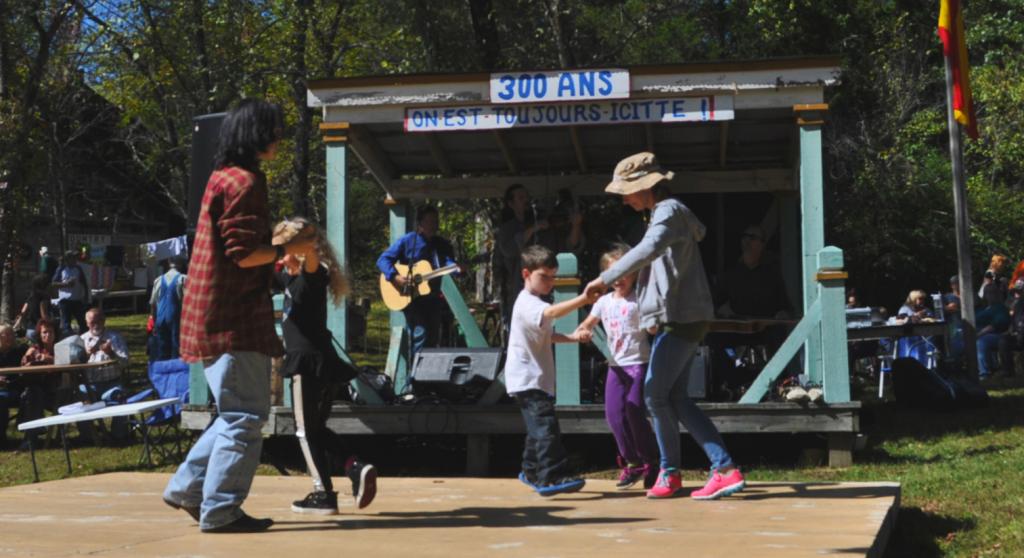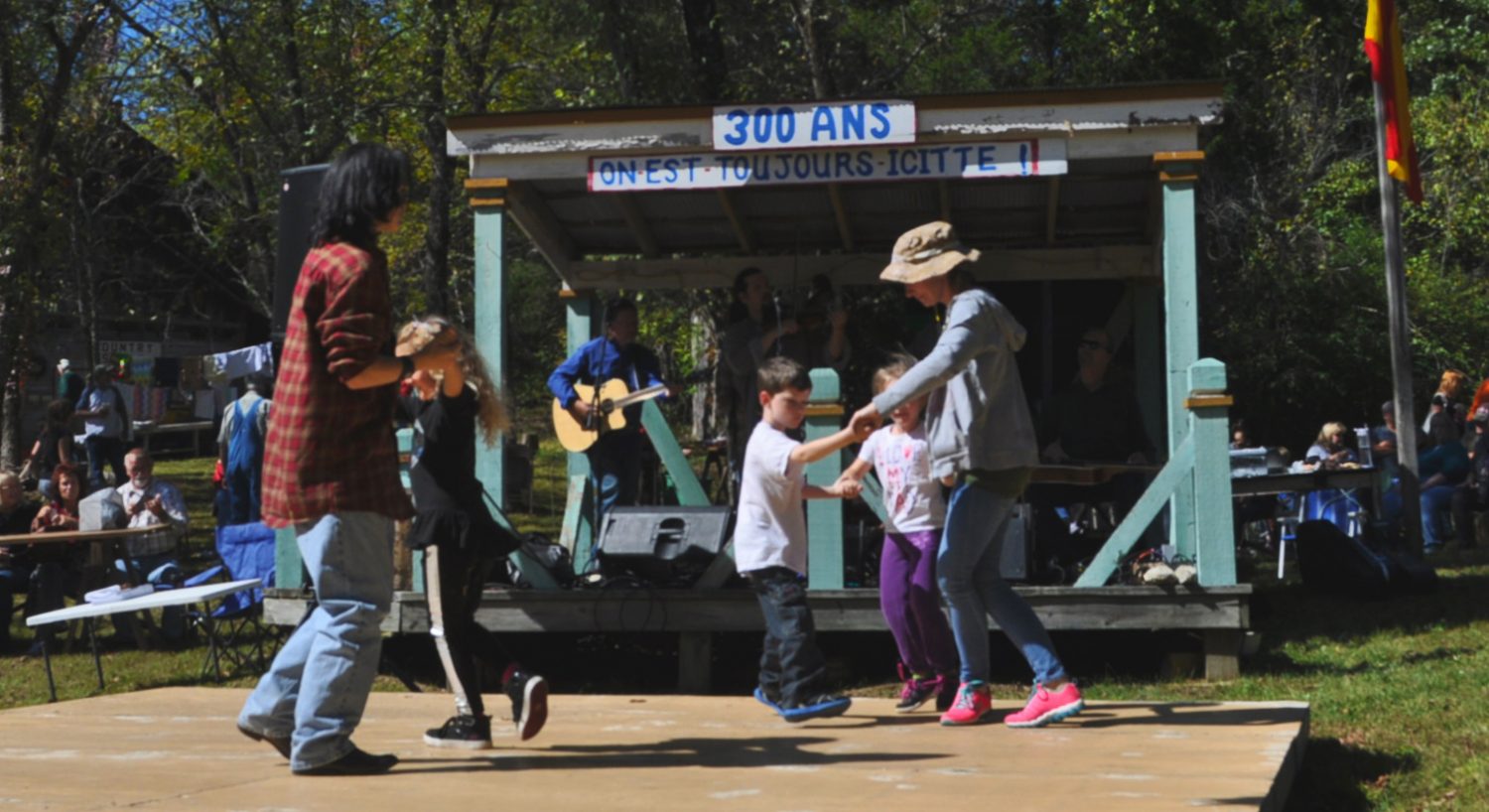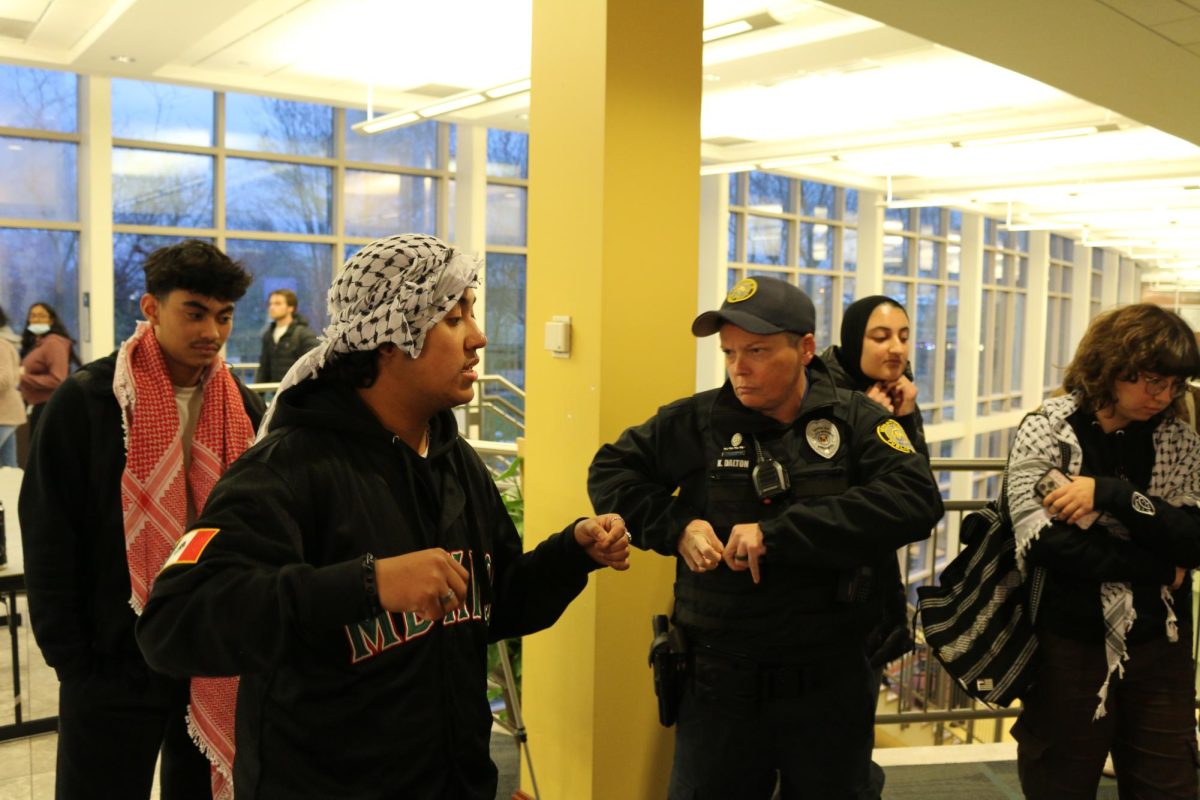
Tim Wilhelm / News Editor
As a dialect disappears, a town turns to song
Sixty miles from Saint Louis University’s campus, a near-extinct dialect of French heralded autumn’s arrival. On Sunday, Oct. 5, the Old Mines Historical Society held its annual Fall Festival (Fête de l’Automne) across from Washington State Park, in De Soto, Mo. The festival is an opportunity for the local community to celebrate the region’s rich French heritage with food, music, dancing and history.
The festival began with the raising of the Spanish, French and American flags, the three nations that occupied the old Louisiana Territory. Old Mines resident Doris Ann Bequette sang “La Marseillaise,” after which the festivalgoers sang “The Star Spangled Banner.” The ceremony ended with the exclamation, “Laissez les bons temps rouler!” Let the good times roll!
Shortly after, the main attraction took the stage: Dennis Stroughmatt et l’Esprit Créole, a folk band which seeks to keep the Creole musical tradition alive. The songs they played—“Isabelle se promène (Isabelle Goes Strolling),” “Grand-mère se plaint (Grandma’s Complaining),” “Old Man Lachance,” “Toute chose du cochon c’est bonne (Every Part of the Hog is Good)” and “J’ai passé devant ta porte (I Passed by Your Door)”—boast roots extending back centuries from France, Quebec, Louisiana and settlements along the Mississippi. As the jaunty notes of Stroughmatt’s fiddle played over the crowd, dancers of all ages took the stage.
Men and women in 19th century garb demonstrated traditional sewing and basket weaving techniques; volunteers sold chicken-and-dumplings, French sausage, croquignoles (a doughnut-like pastry) and cider; and Pat Moore, editor of the Old Mines Historical Society’s quarterly publication The Diggins, presided over a display of literature and genealogical resources. Many families’ ties to the region extend to the late 17th and 18th centuries.
While Stroughmatt and his band took a break from playing, he spoke (in the dialect, known as Missouri or “paw-paw French”) about the state of the language. He is one of a dozen who currently speak it; only five are fluent. As dire as the situation may be, efforts are being made to spread awareness of the dialect and its accompanying heritage. “When they think it’s over, another person comes along,” he said.
Not long ago, Stroughmatt himself was one such person. As a college student at South Eastern Missouri University, he paid frequent visits to Old Mines to learn the dialect. His own origins are steeped in the French Creole exodus down the Mississippi Valley (le Mississipp’ in paw-paw), since he grew up in southern Illinois (he pronounces it eel-een-WAY) near the old French settlement of Vincennes. These days Stroughmatt keeps Creole heritage alive through music, playing throughout the sprawling region pioneered long ago by French speakers.
Dominique Schaffner listened intently as Stroughmatt spoke and engaged him in conversation, often asking him to repeat words and phrases. Shaffner is a native Frenchman who grew up in the Alsace region of France bordering Germany. Schaffner speaks Alsacian in addition to German. After living in Quebec and Mexico, he has lived in Missouri for the last 15 years. “Missouri is the center of going places,” he said. “What’s interesting is when you get deep into people’s lives, they come from all over…that’s America.” He heard of Old Mines through an article on the dialect in January. When asked how he liked the festival, Schaffner said, “We came, we saw, we will be back.”
A French Creole corridor passes straight through St. Louis along the Mississippi and reaches deep within Missouri’s eastern forests, which for centuries have nourished French-speaking villages like Old Mines. “The language remained isolated…there weren’t any contaminations from other languages,” says Dr. Lois C. Hamrick, professor of French at SLU. “One of the most important things we have inherited from these villages was songs.”







Doug Nickelson • Nov 5, 2014 at 6:57 pm
Thank you for taking the time to write the piece about our Fete de l’Automne and our Paw Paw French heritage. It’ sad to see so few people can still speak Paw Paw French. My great grandfather would speak Paw Paw French to me when I was very young and my grandfather would play the songs on his fiddle for me when I asked.